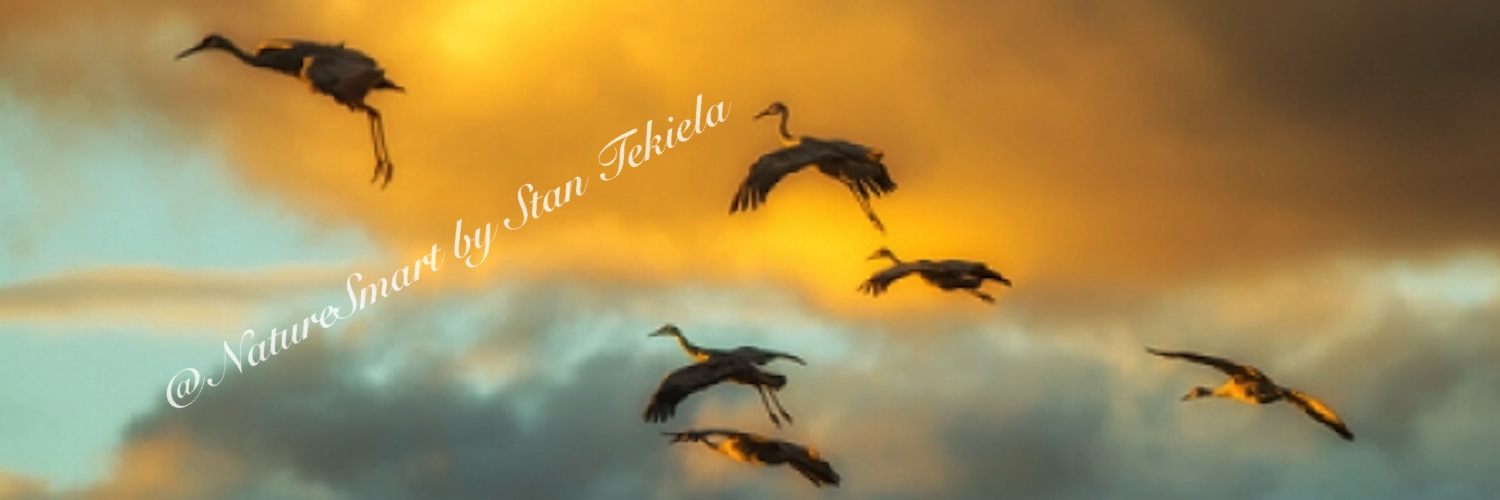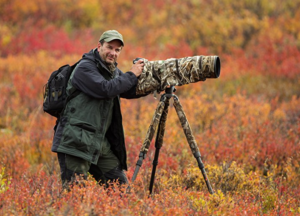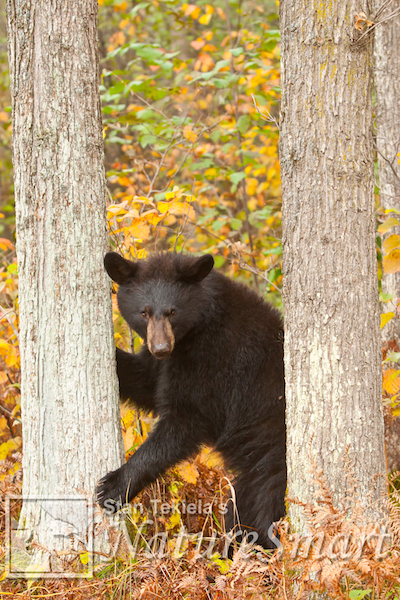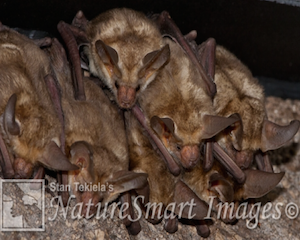
About the Hibernation of Bears and other Mammals
 In today’s post, naturalist and wildlife photographer Stan Tekiela talks to us about the hibernation of bears and other mammals.
In today’s post, naturalist and wildlife photographer Stan Tekiela talks to us about the hibernation of bears and other mammals.
At this time of year, everyone seems to be thinking about staying indoors, eating good food, and watching movies. This would be the human version of hibernation. But actual hibernation is much different.
The act of hibernation only occurs in warm-blooded animals. Yes, it is true that humans are warm-blooded animals, but we still don’t hibernate like other mammals. Hibernation is best described as a period of time (usually winter) when the entire metabolic system of the animal is suppressed—lowering the body’s core temperature, slowing the metabolism, decreasing respiration, and lowering the heart rate. It is important to understand that none of these things actually stop. They just slow way down. The overall effect is to conserve the warm-blooded mammal’s stored fat (energy) so it will last the entire period of hibernation.

The key
to any successful hibernator is the amount of body fat it has stored. The fat is the fuel that will sustain the animal all winter. If
the animal doesn’t have enough fat,
it will simply run out of fuel before spring
and die. Accumulating this fat during fall is extremely important, requiring that most hibernating animals constantly feed during every waking hour of the day. Some animals, such as bears, will eat for 20 hours a day. This is called hyperphagia.
All mammals (including humans) maintain a constant body core temperature usually in the high 90s degrees F. Even a slight deviation of just a couple degrees either higher or lower dramatically affects the animal. Think about yourself, for example. On average, you have a body core temperature of 98.6 F. With just a 2-degree rise in temperature you will be running a low-grade fever. A rise of 4 degrees and you are burning up with a high-grade fever and you will be very ill. Conversely, if your temperature drops 4 or 5 degrees you will be hypothermic and nearly unconscious from the cold. Now consider that a bear may drop its body core temperature 10 or more degrees and you can start to see how amazing hibernation can be.
Looking at respiration, we breathe about 10-12 times a minute. During hibernation, respirations drop to only 1-2 times a minute. A heart rate that runs about 100 beats per minute in many animals drops to 20 or 30 beats, thus slowing the flow of blood to the entire body, including vital organs such as the liver, kidneys, and brain.
Some mammals that are considered true hibernators include many species of bats. Some bats will migrate to warmer climates during winter, while others move into caves where they will hibernate. In fact, bats will be so cold during hibernation that they are covered with a layer of frost. In northern states, hibernating bats may be in the cave for 6 or 7 months.
 Woodchucks are also true hibernators. These plump, short-legged critters feed nonstop during fall and enter their winter den with a layer of fat so thick they look like furry pigs, hence their other common name, whistle-pig. Once a woodchuck enters hibernation, it is down for the entire winter.
Woodchucks are also true hibernators. These plump, short-legged critters feed nonstop during fall and enter their winter den with a layer of fat so thick they look like furry pigs, hence their other common name, whistle-pig. Once a woodchuck enters hibernation, it is down for the entire winter.
Everyone knows about bears hibernating. But bears are not actually true hibernators. Yes, when a bear is hibernating, its heart rate, respiration, and all other bodily functions are greatly reduced, but the bear is still awake. Amazingly, female bears give birth to young during hibernation and remain awake to care for their young.
The Eastern Chipmunk is also not a true hibernator. It gathers food in the fall and stores seeds in a underground burrow. During winter, the chipmunk will periodically wake up to eat, to build up its fat reserves before going back into sleep.
Other critters, such as raccoons and skunks, don’t hibernate at all, but rather just take a break during the coldest parts of the winter. They will hole up in a den and just sleep for up to 6 weeks. So if you are like me and you feel like hibernating, remember the first thing to do is put on a nice layer of fat.
You can follow Stan on Facebook and Twitter, or contact him via his web page. Stan’s nationally syndicated NatureSmart Column appears in more than 25 cities spanning 5 states (Minnesota, Wisconsin, Michigan, Illinois, and Pennsylvania) and is circulated to more than 750,000 readers.
Check out some of Stan’s other posts:
Indigo Bunting—A Familiar Summer Visitor
The Nesting Behaviors of Sandhill Cranes
Big Birds, Baby Birds, Birds Everywhere
Stan Tekiela observes Marsh Wrens
The Magical, Mystical World of Sandhill Cranes


